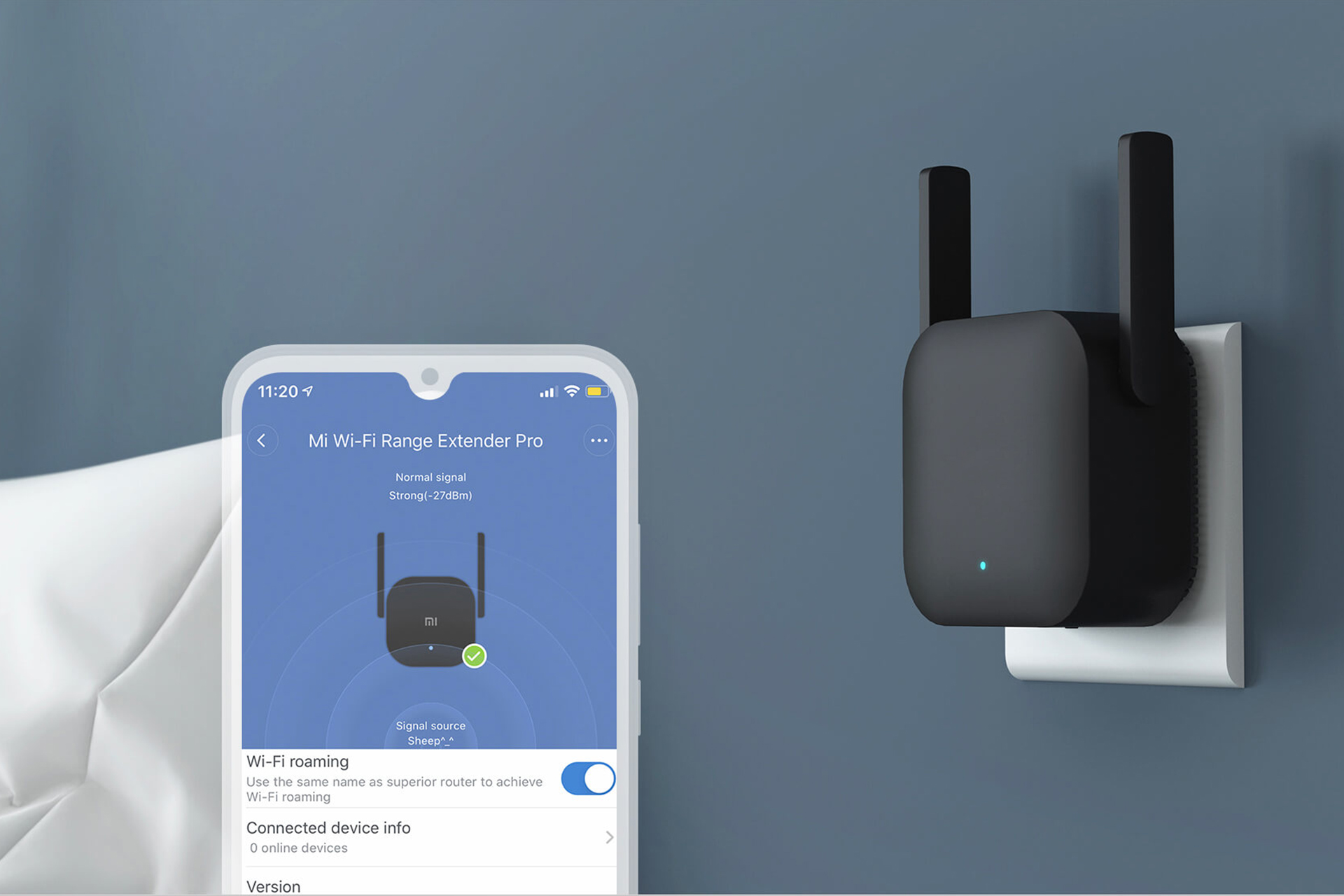More and more well-performing wireless devices launched in global market nowadays, people desire a high-speed and consistent WiFi to cover their house. Many families typically use WiFi routers installed by their Internet Service Providers (ISPs). Some families have upgraded to more powerful and advanced WiFi routers with all the latest features and whistles. Although these new, top-notch routers have faster speed, they may not be able to provide complete home WiFi coverage.
In most families, there is only one router for wireless network coverage, and the coverage of a single wireless router is limited. In some areas, the wireless signal may be very weak or even impossible to search for a signal. Move on to read some methods for achieving complete WiFi coverage for entire regular, large, and ultra large homes.

Install A WiFi Range Extender
One way to extend WiFi coverage for the entire family is to install a WiFi range extender. The range extender increases WiFi coverage by connecting to your existing WiFi router and creating an independent WiFi network with its own name and security certificate.
Although WIFI extenders can extend WiFi coverage, sometimes they are complicated and limited. Firstly, due to the scope extender having its own security certificate, your device must constantly log in to the scope extender and then return to the router while roaming at home. Secondly, the range extender cannot connect with your router and all your devices simultaneously. It will reduces half transmission capacity, because the available bandwidth is shared by range extenders, routers, and all connected devices. Therefore, this method will greatly impact the overall WiFi performance.

Install An Additional WiFi Router
Some people install an additional router at home to expand WiFi coverage. However, this method requires laying network cables at all appropriate access points in home, which makes initial setup and maintenance complex and expensive. In addition, installing an additional router cannot avoid the login interruption and bandwidth issues described in the previous method. In many aspects, security in home wireless networks is a complex issue. Even though research on home wireless network security has advanced significantly over the past few years, there is still much work to be done. For example, except existing security standards, new technologies are needed to detect and protect malware in wireless networks. While the most common threats are caused by malware infecting other components in home wireless networks, other threats can also occur in home wireless networks, including common phishing attacks. In addition to communicating with external hackers, home wireless networks face many internal threats. For example, personal information on a smartphone, laptop or other device may be stolen.

Use Mobile Hotspot
Mobile WiFi hotspot is a portable device that provides signals for internet access anytime, anywhere. It is a WiFi router or access point connected to a cellular internet service provider. The signal of hotspot broadcasting allows people near the device to connect their wireless devices to the internet. Mobile Router is a powerful WiFi hotspot with an Ethernet port for connecting local wired devices. KINGTOP offers a range of high-quality mobile WiFi solutions, including mobile hotspots like KT-M2A, providing you with maximum flexibility and top-level performance. Mobile hotspot has become very popular due to its security, and flexibility. No matter you are a traveler going to remote areas or a businessman on a train, mobile hotspot makes internet access easily. Mobile WiFi hotspots can reduce the needs for mobile modems and serve as portable routers, providing fast and secure internet access in the absence of other secure WiFi networks. KINGTOP offers high-quality mobile hotspots, which ensure you can connect to the Internet anytime, anywhere.
Other Suggestions
In addition to the above methods, the placement of the router should be considered as well. If the house space is limited and has some obstacles, coverage range would be greatly reduced caused by too much attenuation when the wireless signal penetrates. Some users put the router in the weak box, closet or embedded in the wall, the antenna cannot be unfolded, the surrounding panel will also shield the wireless signal, resulting in poor signal quality. It is recommended to choose an optimal placement, you can refer to the following requirements: ① Choose the central area of the house, so that the terminal in each area doesn’t need to through many wall to receive signal. ② Avoid "hiding" the router, put it on higher place, avoid the blockage of metal obstacles. If put it too low, because of the furniture, appliances or other obstacles, signal would be weak.
It should also be paid attention to avoid environmental interference. Most home devices work in the 2.4GHz band, which will interfere with the router's 2.4G wireless signal, resulting in signal attenuation and slower network speed. Wireless router should be as far away as possible from microwave ovens, Bluetooth devices, wireless mouse keyboard and other devices to reduce microwave interference in the same frequency band. If you use wireless light cat at home, it is recommended to turn off the wireless function of wireless light cat to avoid interference. If there are more than one router's wireless signal using the same channel in the adjacent environment, it will also affect the wireless coverage effect. It is recommended to modify the wireless channel.


 French
French German
German Arabic
Arabic Italian
Italian Spanish
Spanish Japanese
Japanese Persian
Persian Korean
Korean Chinese (Simplified)
Chinese (Simplified)









